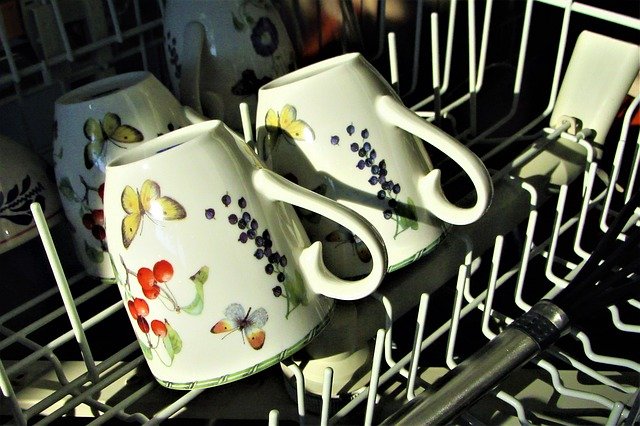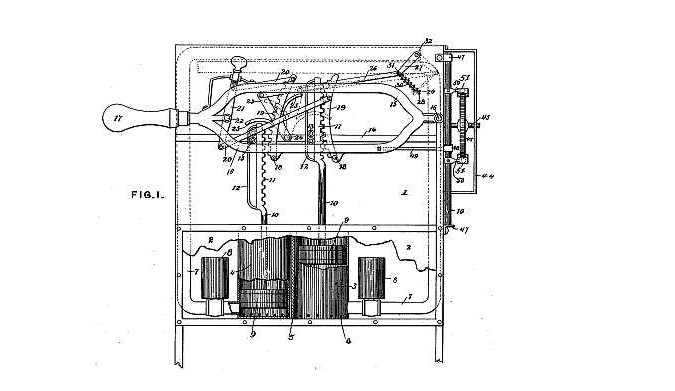Dishwasher
Contents |
[edit] Introduction
A dishwasher is an appliance that uses very hot water and specialist detergent to clean dishes, glassware, cutlery and other kitchen items. There are consumer and commercial machines available, which perform the same function, but with differences in capacity and temperature.
[edit] History
The earliest version of a mechanical dishwasher was patented in the United States in 1850. The inventor, Joel Houghton, referred to the device as a machine for cleaning crockery or other types of table furniture. This device included a cylinder with a rack to hold the items being washed. A hand crank made the rack move while water splashed onto the items as they rotated in the machine.
The next iteration was introduced in 1886 by Josephine Cochran (a wealthy socialite) and George Butters (a mechanic). The rack and water jet system they devised was also hand powered and was displayed to the public at the 1893 Chicago World’s Fair. The invention from the Garis-Cochran Company (later to become part of KitchenAid) garnered much attention, particularly from commercial organisations, and it was awarded the highest prize at the fair for "best mechanical construction, durability and adaptation to its line of work".
Patent serial No. 187,276 submitted by Cochran on 31 December 31 1885.
In 1924, William Howard Livens from the UK invented a non-electric dishwasher for consumer use. This machine incorporated many of the features found in modern machines, but was not widely adopted.
In 1929, Miele invented the first consumer dishwasher operated by an electric motor. However, it wasn’t until the 1950s that consumers began to see the benefits of this device, which had been thought of as a luxury up until that point. These devices were portable and independent, and some had to be manually hooked up to a sink when in use. Eventually, consumer kitchens adopted continuous countertops and uniform cabinets, so dishwashers could be integrated into the layout.
[edit] How dishwashers work
Most dishwashers operate by following the same basic steps:
- Water is added and heated. Most commercial machines use water heated to temperatures of 65–71°C while sanitation occurs at an 82°C "final rinse" temperature or through the use of a chemical sanitiser. Consumer dishwashers commonly use 75°C water, although some operate effectively with advanced detergents and lower temperatures (50–55°C). The temperatures are lower for consumer models to prevent the risk of accidental scalding.
- The detergent dispenser opens and water is sprayed at the items to be cleaned.
- Used water is drained.
- Items are rinsed with fresh water.
- Used water is drained.
- Air is heated to dry the items (commercial machines may use a different, faster method).
[edit] Related articles on Designing Buildings Wiki
Featured articles and news
RTPI leader to become new CIOB Chief Executive Officer
Dr Victoria Hills MRTPI, FICE to take over after Caroline Gumble’s departure.
Social and affordable housing, a long term plan for delivery
The “Delivering a Decade of Renewal for Social and Affordable Housing” strategy sets out future path.
A change to adoptive architecture
Effects of global weather warming on architectural detailing, material choice and human interaction.
The proposed publicly owned and backed subsidiary of Homes England, to facilitate new homes.
How big is the problem and what can we do to mitigate the effects?
Overheating guidance and tools for building designers
A number of cool guides to help with the heat.
The UK's Modern Industrial Strategy: A 10 year plan
Previous consultation criticism, current key elements and general support with some persisting reservations.
Building Safety Regulator reforms
New roles, new staff and a new fast track service pave the way for a single construction regulator.
Architectural Technologist CPDs and Communications
CIAT CPD… and how you can do it!
Cooling centres and cool spaces
Managing extreme heat in cities by directing the public to places for heat stress relief and water sources.
Winter gardens: A brief history and warm variations
Extending the season with glass in different forms and terms.
Restoring Great Yarmouth's Winter Gardens
Transforming one of the least sustainable constructions imaginable.
Construction Skills Mission Board launch sector drive
Newly formed government and industry collaboration set strategy for recruiting an additional 100,000 construction workers a year.
New Architects Code comes into effect in September 2025
ARB Architects Code of Conduct and Practice available with ongoing consultation regarding guidance.
Welsh Skills Body (Medr) launches ambitious plan
The new skills body brings together funding and regulation of tertiary education and research for the devolved nation.
Paul Gandy FCIOB announced as next CIOB President
Former Tilbury Douglas CEO takes helm.
UK Infrastructure: A 10 Year Strategy. In brief with reactions
With the National Infrastructure and Service Transformation Authority (NISTA).
























